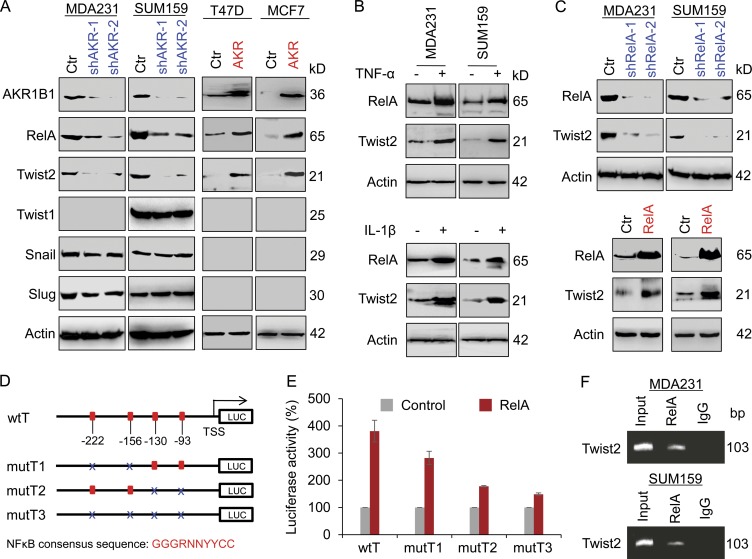Figure 5.
RelA transcriptionally induces Twist2 expression. (A) Expression of AKR1B1, RelA, Snail, Slug, Twist1, and Twist2 was analyzed by Western blotting in MDA-MB231 and SUM159 cells with stable empty vector (Ctr) or knockdown of AKR1B1 expression (left), as well as T47D and MCF7 cells with stable empty vector or AKR1B1 expression (right). (B) MDA-MB231 and SUM159 cells were treated with either 20 ng/ml TNF (top) or 20 ng/ml IL-1β (bottom) for 12 h, and expression of RelA and Twist2 was analyzed by Western blotting. (C) Expression of RelA and Twist2 was analyzed by Western blotting in MDA-MB231 and SUM159 cells with stable empty vector or knockdown of RelA expression (top), as well as cells with stable empty vector or RelA expression (bottom). (D) Schematic diagram showing positions of potential NF-κB–binding motifs in the Twist2 promoter. Twist2 promoter luciferase (LUC) construct and mutated derivatives are also shown. NF-κB consensus sequence: GGGRNNYYCC. R is purine, Y is pyrimidine, and N is any base. (E) Twist2 promoter luciferase construct (wtT) as well as its mutants (mutT1, mutT2, and mutT3) were coexpressed with empty vector or RelA in T47D cells. After 48 h, luciferase activities were determined and normalized. Data are mean ± SD in three separate experiments. (F) ChIP analysis for binding of RelA to the Twist2 promoter in MDA-MB231 and SUM159 cells.

